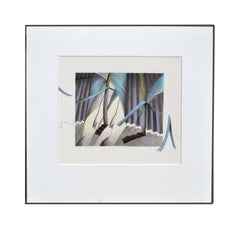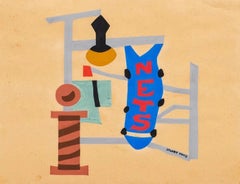Yukako Okudaira Art
Yukako Okudaira was born in Tokyo and raised in Kugenuma-Kaigan. She immigrated to California in 1962. She holds a Master’s degree in painting from California State University in San Jose. In 1985, she studied at Skowhegan School of Painting and Sculpture under Elizabeth Murray, Richard Serra, John Chamberlain, Mary Heilmann, Eric Fischl and Richard Artschwager. Okudaira has taught at Foothill College, West Valley College and California State University in San Jose. Her works have been exhibited extensively in the U.S., Japan and Germany. Her works are in the permanent collection of the San Francisco Museum of Modern Art and San Jose Museum of Modern Art. Okudaira currently lives and works in New York City, NY and Milan, Italy.
1980s Modern Yukako Okudaira Art
Paper, Watercolor
1940s Modern Yukako Okudaira Art
Paper, Gouache
1930s American Modern Yukako Okudaira Art
Paper, Gouache, Pencil
1970s Modern Yukako Okudaira Art
Paper, Watercolor
1950s American Modern Yukako Okudaira Art
Ink, Gouache, Graphite, Paper
1920s Modern Yukako Okudaira Art
Paper, Ink, Watercolor
1930s American Modern Yukako Okudaira Art
Watercolor, Paper
1930s American Modern Yukako Okudaira Art
Paper, Watercolor
1950s Modern Yukako Okudaira Art
Paper, Watercolor
Mid-20th Century American Modern Yukako Okudaira Art
Paper, Gouache
1930s American Modern Yukako Okudaira Art
Watercolor, Paper
1940s American Modern Yukako Okudaira Art
Paper, Watercolor
1960s Modern Yukako Okudaira Art
Paper, Watercolor, Gouache

